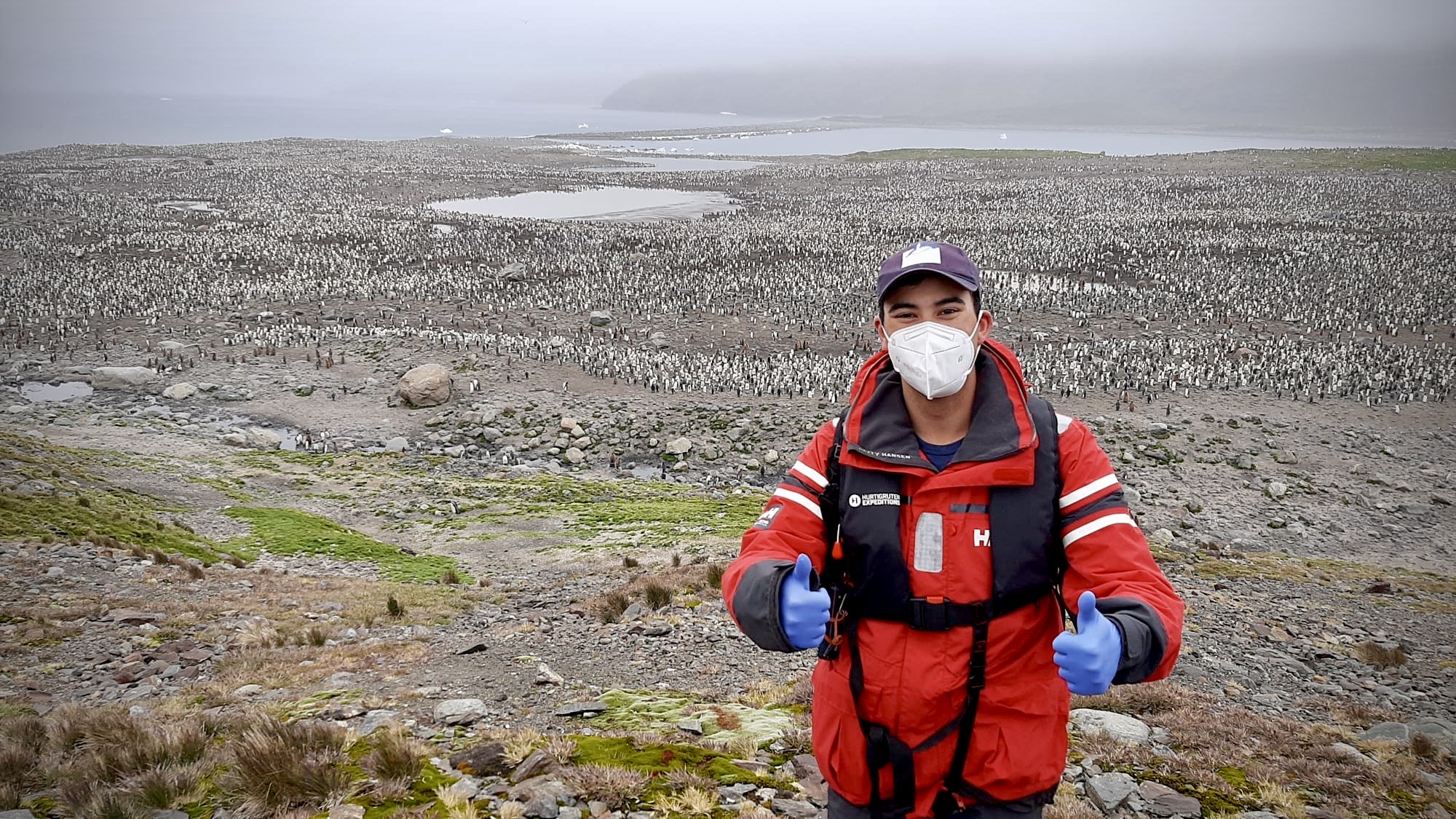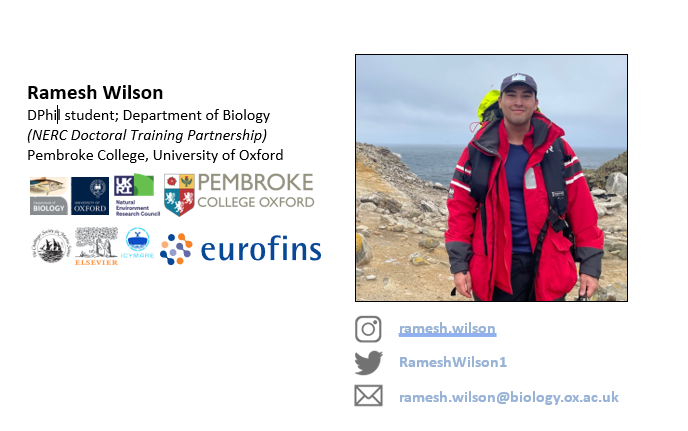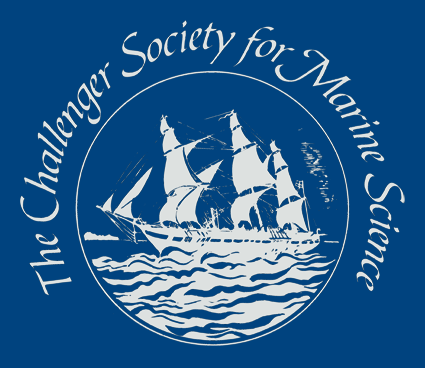Project HotMess: The first global project on the impacts of multiple stressors on rocky shore communities
Ramesh Wilson
University of Oxford

Throughout January 2024, my fieldwork, generously supported by the Challenger Society, has taken me across the Antarctic peninsula, and the sub-Antarctic islands. The goal of my fieldwork has been to scout suitable sites to extend the scope of my PhD (Project HotMess), which investigates the impacts of warming and sewage pollution on rocky shore communities.
Project HotMess: The first global project on the impacts of multiple stressors on rocky shore communities
Warming and sewage pollution represent a global, and local level stressor respectively. Unfortunately, marine research typically does not consider the combined impacts of stressors on community composition, and even less so at different spatial scales. As a result, my PhD aims to develop a simple, replicable method, that can be done globally.
The experiment uses black and white plastic squares placed along global rocky shore coastlines, at different proximities to a pollution source. The black plates simply heat up under the sun, producing a very simple, passive warming treatment, in combination with different pollution densities.
I wanted to take this experiment that we initiated in Brighton, and scale it up wherever we could. It’s likely that the impacts of warming and pollution will be different in different biogeographic contexts - spurred on my local weather patterns, species compositions etc. To do so, I spent the first year of my PhD recruiting over 20 collaborators globally to repeat the experiment. I conducted lots of research to provisionally determine key sites that would be appropriate to install my experiment across the Southern Ocean. However, the lack of transparency in monitoring and reporting pollution data across these regions, as well as a lack of rocky shore research in general, meant that I would need to find these sites for myself.
Why Antarctica?
To date, I have recruited collaborators and had replicates installed across all continents - all continents except Antarctica (from here on, including South Georgia and the sub-Antarctic islands). Installing replicates in Antarctica offers incredible insights into arguably the most remote region on Earth. Some key points of note include:
- The opportunity to be the first experimentally manipulated, in-situ intertidal experiment ever conducted in Antarctica
- Glacial retreat is unveiling new rocky shore habitats
- Extremely high biotic variability across the intertidal
- Unique coastal biome:
- Seasonal ice scouring
- High UV radiation
- Amplified variations in temperature and salinity seasonally
On board the MS Fram: a day-in-the-life
I was invited by the project, Penguin Watch, to accompany their research efforts in Antarctica for the entire month of January. Penguin Watch, a research project originated in the University of Oxford by Dr. Tom Hart (now Oxford Brookes University), has placed time-lapse cameras across Antarctica and the sub-Antarctic, to monitor the phenology of +90 penguin colonies, in response to climate change pressures. Maintenance of these cameras and retrieval of data has been facilitated by a network of expedition cruise operators, of which the Penguin Watch team join as guest scientists. This permits access to Antarctic sites annually, in exchange for providing lectures and seminars throughout the excursion. Alongside the Penguin Watch team, I joined the Hurtigruten MS Fram as a guest scientist.
Morning and afternoon landings


Caption: Various project work, including camera servicing, benthic microalgae sampling, drone flight retrieval, and colony density estimation.
On landing days, we would do both a morning and afternoon landing. Our mornings typically consisted of a fairly early start (early for me at least) - at around 6am. After a quick breakfast in the crew mess, we’d then go and get on all of our gear, and pack up all our various equipment. On top of servicing Penguin Watch’s cameras and retrieving time-lapse imagery data, Penguin Watch works collaboratively with other scientists across the globe, to facilitate their projects in Antarctica. As such, we had several additional projects to support by collecting data and samples. This included:
- Benthic microalgae readings of freshwater lakes
- Freshwater zooplankton samples
- Freshwater pollution readings
- Penguin guano samples
- Drone images of penguin colonies and freshwater lake thermal gradients
- Pollen trap set-up
- Avian influenza (H5N1) reporting and documentation of suspected/confirmed cases
Once landed, myself and the other Penguin Watch team member would then get on with our research tasks for the day. This massively differed day-to-day, depending on several factors - primarily whether Penguin Watch has a camera set up at a site. If on the rare occasion this was not the case, we would still try to ensure a colony drone survey was conducted of penguin colonies and seals. Furthermore, the drone surveys used a thermal imaging drone, allowing us to identify deceased individuals among colonies. Throughout our work, several biosecurity measures were in place, including:
- Boot and clothing disinfection before and after each landing
- No equipment placed on the ground (or on a disinfected tarp)
- Compliance with IAATO guidelines on wildlife proximity and biotic sampling
During each respective landing, I would keep an eye out for potential HotMess candidate sites. The expedition went across four regions: 1) The Falklands; 2) South Georgia; 3) South Orkney; 4) Antarctic peninsula - in total, we were able to land on 18 sites across these regions to conduct our project work. Each region was incredibly different from the last: either by climate, wildlife, or heritage value. What was incredibly noticeable however, was the further South we went, the more pristine it felt. As a result, it was earlier on in the trip, where I discovered ideal candidate sites to install my experiment, due to the presence of sewage effluents along some rocky shores. Notably, two key sites emerged:
- Carcass Island (Falklands)
- Grytviken (South Georgia)
Unfortunately, HPAI cases spreading across the Southern Ocean may (appropriately) limit access to these regions in years to come. However, I am confident that within the year, I shall be able to install one site in at least Carcass Island (access and permits pending), with infrastructure in place to install in South Georgia also, should access allow it.
Evening activities
Every evening, the Expedition Team would host a number of activities - ranging from ecological lectures and recaps to historical discussions, species ID workshops, and even musical demonstrations! As part of my role as a guest scientist, I gave discussions at the end of each region of travel, recapping the work myself and Penguin Watch have done, as well as general recap on the flora and fauna the guests may have encountered.
On top of this, I led a couple of workshops to identify plankton in some freshwater lake samples. Anytime we encountered a freshwater lake on our trip, we took zooplankton samples for a collaborator, but reserved some of the freshwater to get under the microscope and show guests the unseen diversity of life in polar lakes!
Evenings also consisted of a lot of data back up, disinfecting, and the occasional attempt at yoga with the Expedition Team (which eventually phased out after we simply could not stay upright during rough waves).
I am incredibly grateful for being awarded the Challenger Society Travel Award. It has given me an invaluable opportunity to expand the scope of my PhD, as well as gain more practical fieldwork and lecture experience. Furthermore, I have been able to contribute to a variety of research projects across the southernmost region of the world. I hope my work can bring increased awareness of the necessity to protect rocky shore coastlines, particularly in the face of a both global and local change.

Latest News
Heat and carbon uptake in the Southern Ocean: the state of the art and future priorities
The following Royal Society Philosophical Trans A issue has been highly cited and downloaded - Heat and carbon uptake in the Southern Ocean: the state of the art and future priorities organised and edited by Andrew J S Meijers, Corinne Le Quéré CBE FRS, Pedro M S Monteiro, Jean-Baptiste Sallée and the articles can be accessed directly at www.bit.ly/TransA2249
Purchase the print issue at the reduced price of £40 by contacting sales@royalsociety.org
New Chief Executive at the National Oceanography Centre
Dr John Siddorn will officially start the role of CEO of the National Oceanography Centre (NOC) on 4 April 2024, bringing with him extensive experience in leadership in science, technology, and innovation. Dr Siddorn will be replacing Professor Ed Hill CBE, who announced his retirement from NOC in November 2023 after nineteen years of distinguished service leading the organisation. Full news story.
The Marine Environmental Data and Information Network (MEDIN) Open Meeting
The Marine Environmental Data and Information Network (MEDIN) invites the marine community, particularly those from a policy, commercial, academic and conservation background, to an open meeting to introduce the new MEDIN Business Plan 2024-2029 and to discuss how the wider community can contribute to the future developments in UK marine data management.
Wednesday 24th April 2024 – HYBRID (The Crown Estate, 1 St James's Market, St. James's, London SW1Y 4AH and online using Microsoft Teams)
